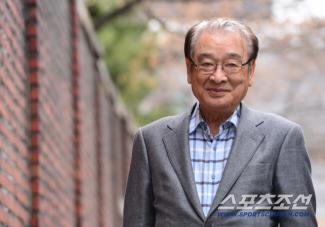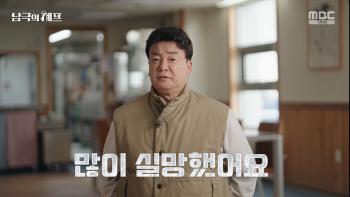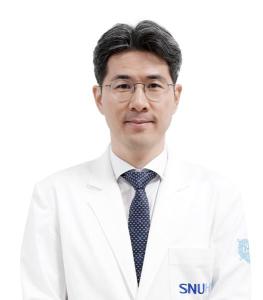Combined heart valve treatment, safety and recovery speed of minimally invasive surgery
Nov 27, 2025
The results showed that minimally invasive surgery is superior to conventional median thoracic osteotomy in terms of safety and recovery speed.
Professor Jae-gon Cho of Cardiovascular Thoracic Surgery at Seoul National University Bundang Hospital presented the mid-term results of complex valve minimally invasive surgery, including aortic valve, at the 57th Korean Cardiovascular Thoracic Surgery Association Autumn Conference' held recently. As a result of the analysis, minimally invasive surgery showed excellent success rate and rapid recovery, suggesting the possibility of becoming a standard treatment even in complex valve surgery.
Heart valve disease is a disease that causes blood flow problems due to damage to heart valve tissue. In particular, complex heart valve disease is a case where problems occur in several valves at the same time, and the operation is complicated, so mediastinal thoracotomy has traditionally been performed. Median thoracotomy is a surgical procedure in which the sternum in the middle of the chest is incised for easy access to the heart.
Minimally invasive heart surgery is a method of surgery by making a small incision between the ribs, which has the advantages of small scars, less pain, and faster recovery. However, according to statistics from the American Society of Thoracic Surgery (AATS), only 10% to 20% of all heart valve surgeries are performed as minimally invasive surgery, especially for complex valve surgery.
The heart valve surgery team at the Bundang Seoul National University Hospital Cardiovascular Center has performed more than 2,000 heart valve operations with minimally invasive surgery over the past 20 years, leading minimally invasive heart surgery in Korea. More than 90% of single valve disease surgery is performed as minimally invasive surgery, and it is also actively applied to complex heart valve diseases.
Professor Jae-gon's team compared and analyzed the results of surgery from 173 patients with complex heart valve disease from May 2015 to May 2025 and 30 patients who underwent minimally invasive surgery. Compared to the median thoracotomy group, where the success rate of surgery was about 97%, the success rate of surgery in the minimally invasive surgery group was 100%, showing excellent stability as major complications such as stroke and kidney failure and the use of cardiac aids did not occur.
There was also a clear difference in the speed of recovery. Operating an early excitation program to remove ventilators immediately after surgery and a fast walking and discharge system, 93.3% of patients were discharged from the ICU within 2 days of surgery, and 96.7% of patients were discharged within 10 days. Most of the patients who underwent minimally invasive surgery were discharged after 4 to 5 days, showing much faster recovery than those who underwent median thoracotomy (8 to 9 days).
Professor Jae-gon Cho of Cardiovascular Thoracic Surgery said, `The Cardiovascular Center at Bundang Seoul National University Hospital is the most active in minimally invasive surgery in all heart valve surgeries, including robotic surgery, minimally invasive mitral valve, aortic valve, tricuspid valve surgery"This is the result of comprehensive medical efforts to help patients recover quickly and efficiently with the safety of patients as the top priority, beyond simply surgical methods that reduce incisions."
The Cardiovascular Center at Seoul National University Bundang Hospital operates an integrated treatment system (Heart Team) with the goal of 'Small Wound, Less Sick, and Fast Recovery' by combining cardiovascular thoracic surgery, circulatory medicine, anesthesiology, anesthesiology, radiology, and intensive care departments.
Professor Jae-gon Cho of Cardiovascular Thoracic Surgery at Seoul National University Bundang Hospital presented the mid-term results of complex valve minimally invasive surgery, including aortic valve, at the 57th Korean Cardiovascular Thoracic Surgery Association Autumn Conference' held recently. As a result of the analysis, minimally invasive surgery showed excellent success rate and rapid recovery, suggesting the possibility of becoming a standard treatment even in complex valve surgery.
Heart valve disease is a disease that causes blood flow problems due to damage to heart valve tissue. In particular, complex heart valve disease is a case where problems occur in several valves at the same time, and the operation is complicated, so mediastinal thoracotomy has traditionally been performed. Median thoracotomy is a surgical procedure in which the sternum in the middle of the chest is incised for easy access to the heart.
Minimally invasive heart surgery is a method of surgery by making a small incision between the ribs, which has the advantages of small scars, less pain, and faster recovery. However, according to statistics from the American Society of Thoracic Surgery (AATS), only 10% to 20% of all heart valve surgeries are performed as minimally invasive surgery, especially for complex valve surgery.
The heart valve surgery team at the Bundang Seoul National University Hospital Cardiovascular Center has performed more than 2,000 heart valve operations with minimally invasive surgery over the past 20 years, leading minimally invasive heart surgery in Korea. More than 90% of single valve disease surgery is performed as minimally invasive surgery, and it is also actively applied to complex heart valve diseases.
Professor Jae-gon's team compared and analyzed the results of surgery from 173 patients with complex heart valve disease from May 2015 to May 2025 and 30 patients who underwent minimally invasive surgery. Compared to the median thoracotomy group, where the success rate of surgery was about 97%, the success rate of surgery in the minimally invasive surgery group was 100%, showing excellent stability as major complications such as stroke and kidney failure and the use of cardiac aids did not occur.
There was also a clear difference in the speed of recovery. Operating an early excitation program to remove ventilators immediately after surgery and a fast walking and discharge system, 93.3% of patients were discharged from the ICU within 2 days of surgery, and 96.7% of patients were discharged within 10 days. Most of the patients who underwent minimally invasive surgery were discharged after 4 to 5 days, showing much faster recovery than those who underwent median thoracotomy (8 to 9 days).
Professor Jae-gon Cho of Cardiovascular Thoracic Surgery said, `The Cardiovascular Center at Bundang Seoul National University Hospital is the most active in minimally invasive surgery in all heart valve surgeries, including robotic surgery, minimally invasive mitral valve, aortic valve, tricuspid valve surgery"This is the result of comprehensive medical efforts to help patients recover quickly and efficiently with the safety of patients as the top priority, beyond simply surgical methods that reduce incisions."
The Cardiovascular Center at Seoul National University Bundang Hospital operates an integrated treatment system (Heart Team) with the goal of 'Small Wound, Less Sick, and Fast Recovery' by combining cardiovascular thoracic surgery, circulatory medicine, anesthesiology, anesthesiology, radiology, and intensive care departments.
|
This article was translated by Naver AI translator.














